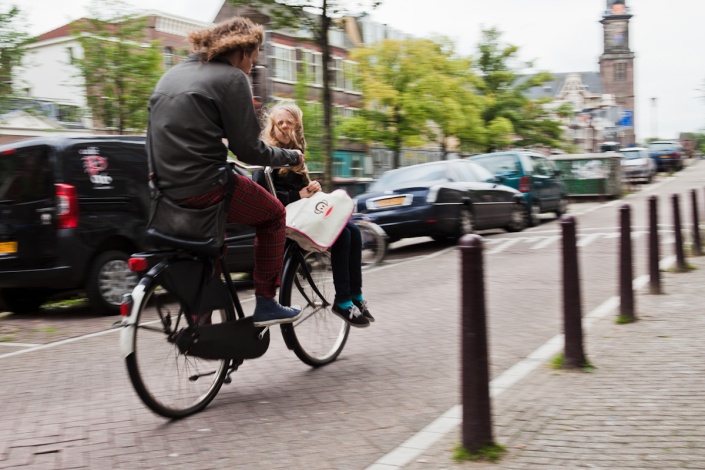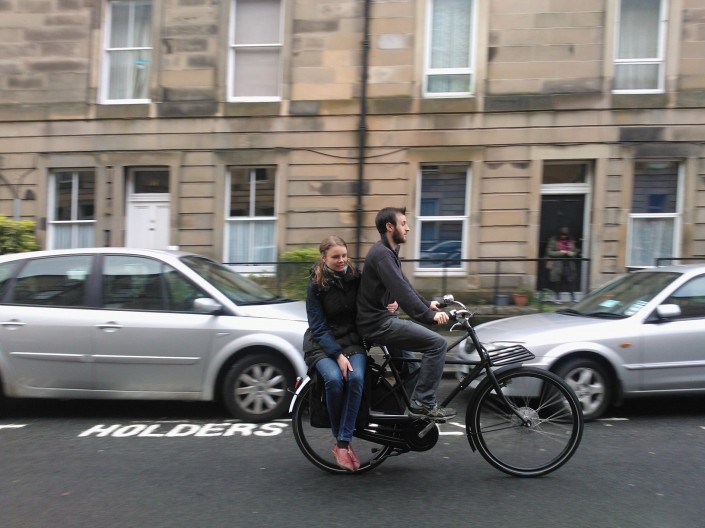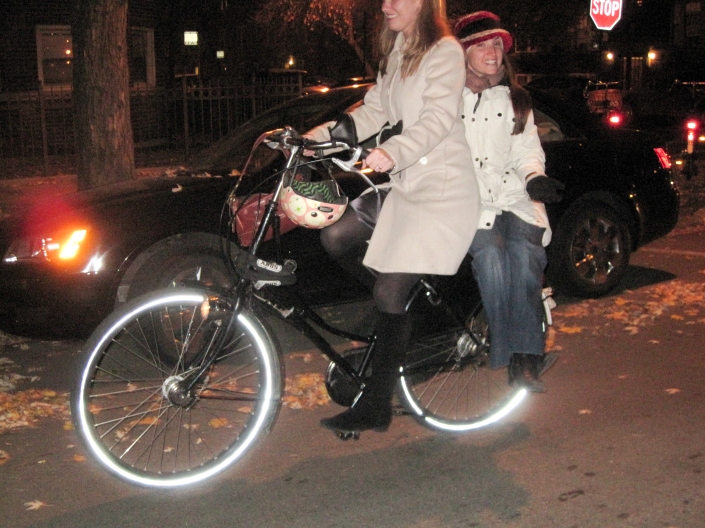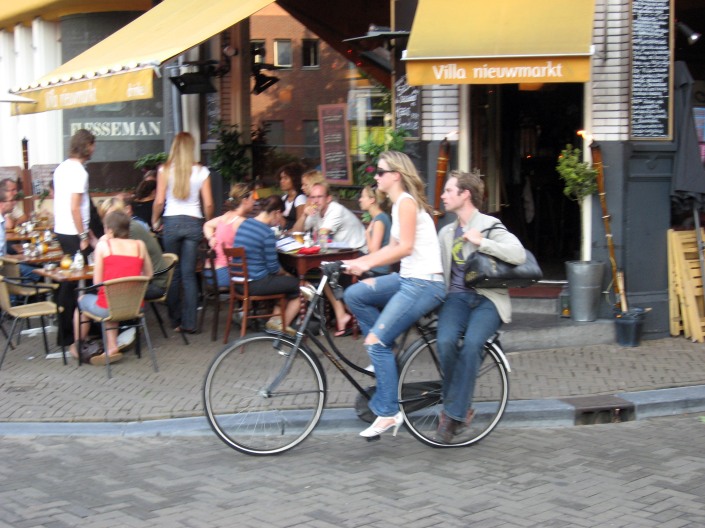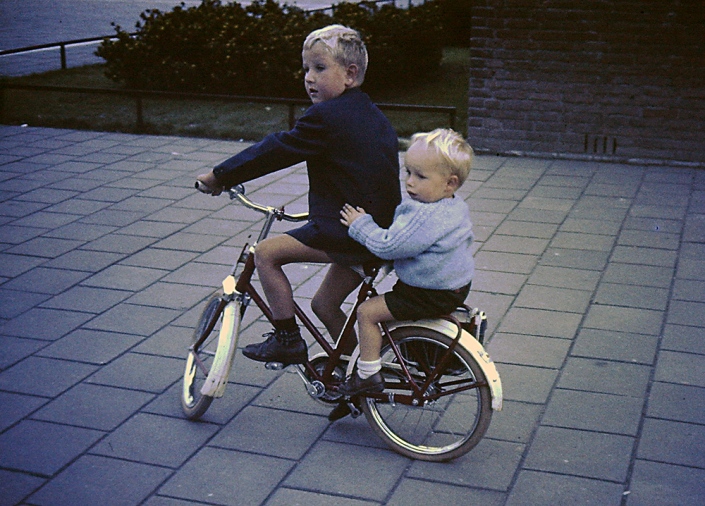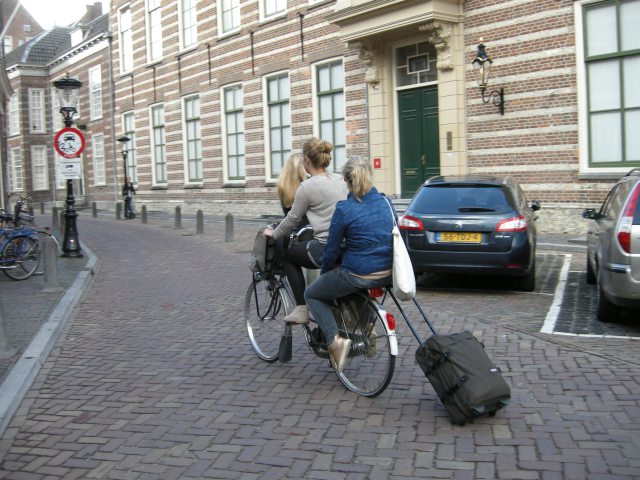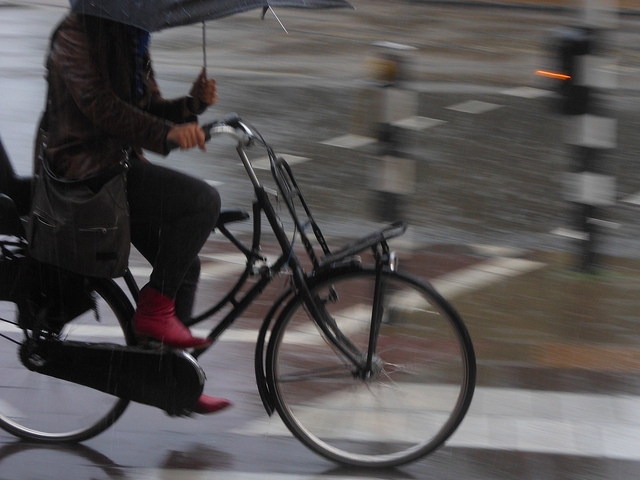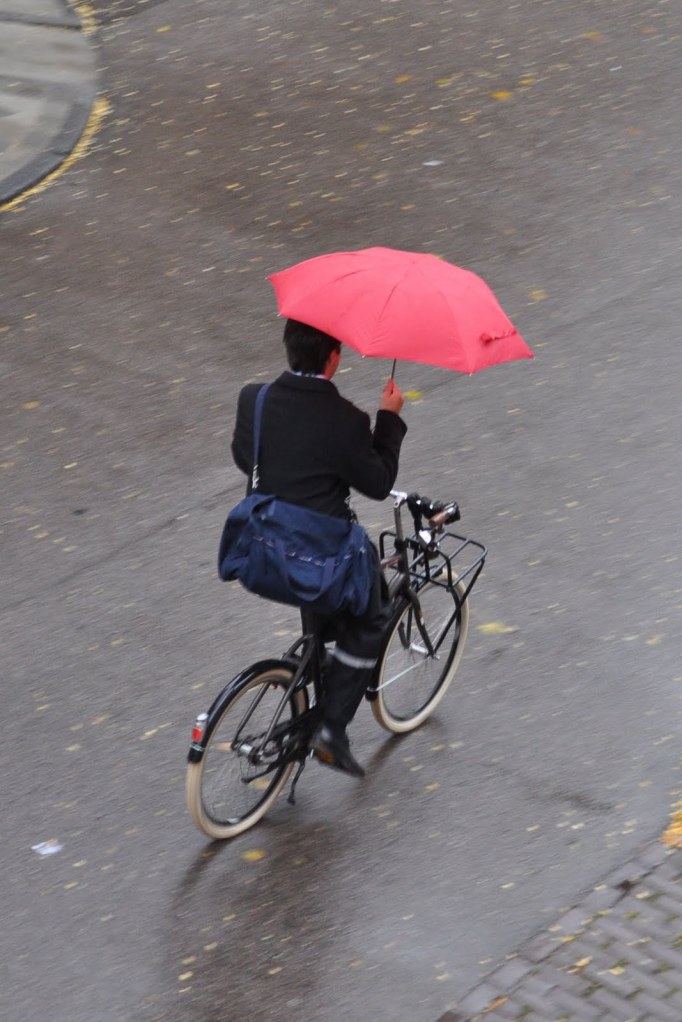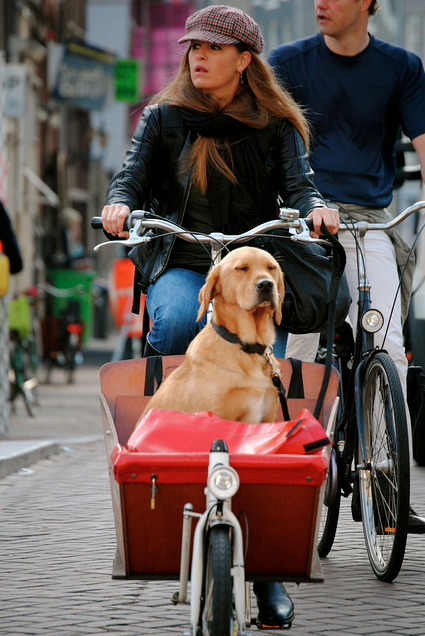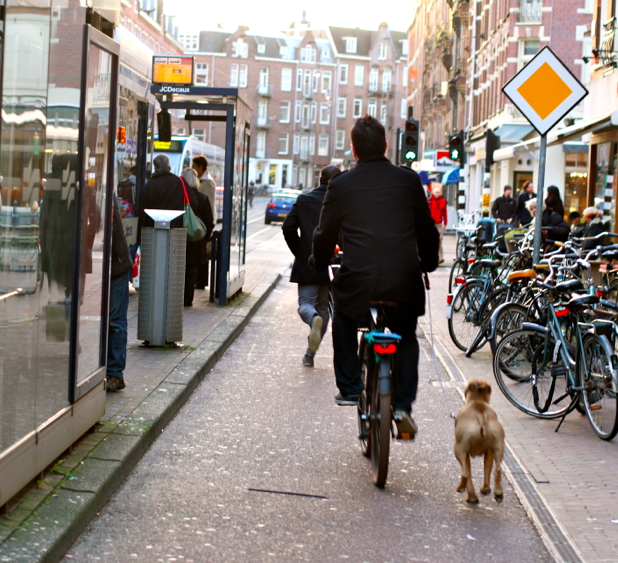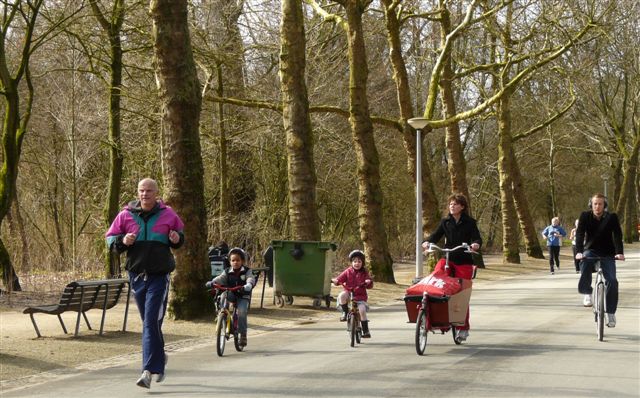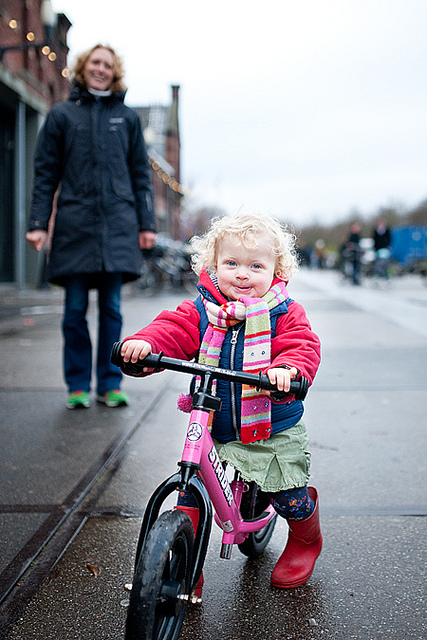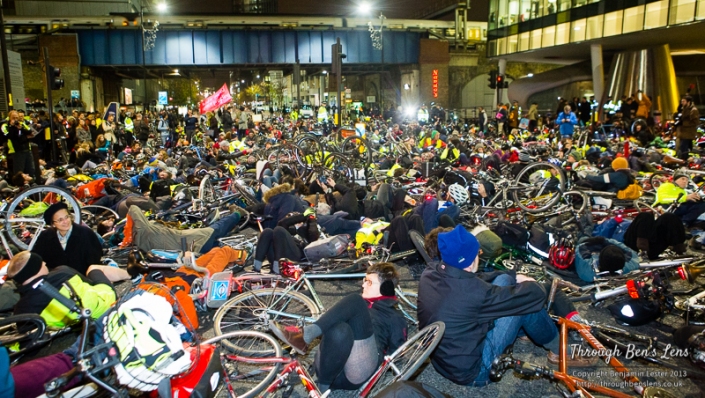HGVs
Cycling is not (intrinsically) dangerous
2013 saw many articles written under titles referring to the ‘dangers of cycling’. A few random examples can be found here, here, here, and here. This one even talks about the ‘terrors’ faced by cyclists on the road.
Indeed, cycling can be a dangerous activity, but this is not because cycling itself is dangerous…
For instance, it isn’t dangerous to cycle without a helmet
It isn’t dangerous to cycle without hi-viz
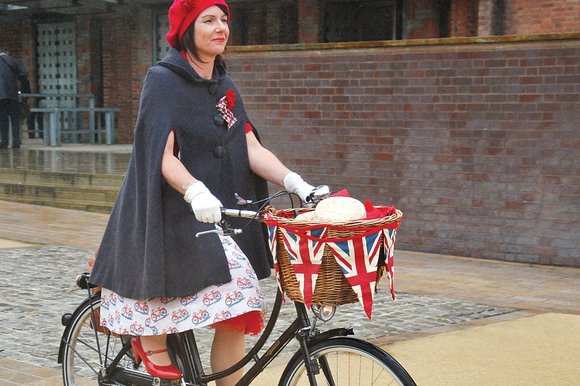
It isn’t dangerous to cycle with a passenger…
…no matter what age you are!
Even a couple of passengers (and a suitcase) is no big deal
Cycling with kids isn’t dangerous either
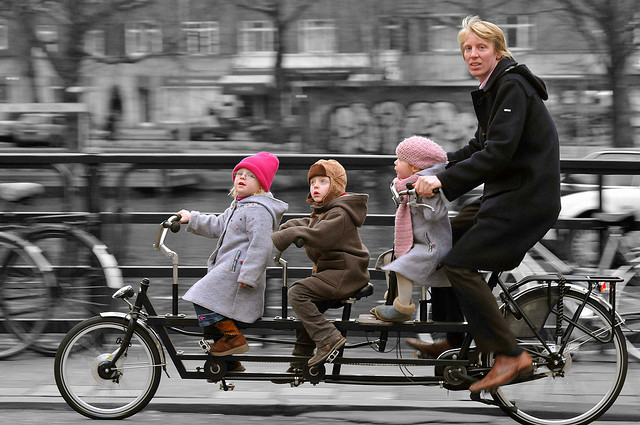
and it isn’t dangerous to cycle with an umbrella
It certainly isn’t dangerous to cycle next to your friends
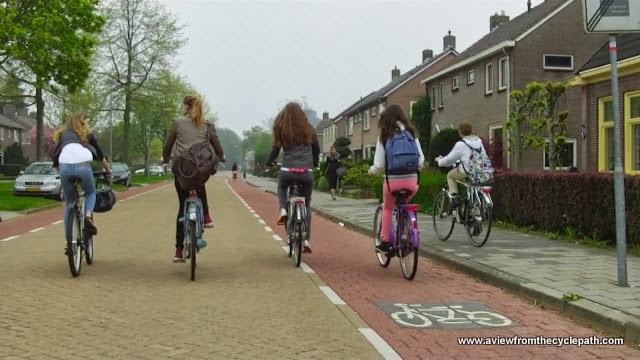
Even four-legged friends are safe to ride with.
Whether you’re a little bit older…

…or a little younger
…cycling itself is not a dangerous activity.
What these photographs illustrate is how the physical environment affects the relative danger of riding a bike. Many of the pictures also show how good infrastructure is the key factor in determining whether or not cycling is actually safe.
As we move into 2014, I am hopeful that governing bodies in the UK (and elsewhere, for that matter) pick up on the merits of cycling and do what is needed to protect people who ride bikes. At present (and from my perspective), city dwellers face an unappealing trilemma when deciding upon transportation; they can either:
1. Contribute to the city’s pollution and congestion by paying through the nose for a car (+driving licence/insurance/MOT/VED/petrol/parking etc.).
2. Pay to take crowded/crappy (and notoriously unreliable) public transport.
3. Ride a bike but risk their lives by sharing the road with heavy/powerful/fast moving motor vehicles.
If a person is able to ride a bike (i.e. if their health permits it), then it should be in everybody’s interest to support them. Biker riders take up less space on the roads, and so there is less congestion for everyone else; they are not pumping out pollution into the air that we all have to breath; they are exercising their bodies and so easing pressure on an NHS that is currently strained by an obesity epidemic; they aren’t damaging the roads to nearly the same degree that other vehicles do (thus saving tax-payers money); they don’t run people over (and if they do, injuries are usually minor); and last but not least, motor-vehicle dominated cities are noisy and unpleasant places, and so bikes offer a quiet and civilised remedy to this.
I think that cycling is brilliant, not just for the bike rider but for the world. I intend to keep up the pace this year with my campaigning, and I hope to keep you updated with any developments/innovations that might be of interest.
All the best
Space for cycle lanes – it can be found!
Whenever I tell people about my dream of having some decent cycling infrastructure in the UK, I am frequently met with the same point about there not being enough space on British roads. The general feeling is that roads are already too narrow, and that there simply isn’t any room to accommodate the type of segregated cycle lanes that work so well on the continent.
In opposition to this, I would like to present you with a group of photos taken from Google Streetview. In the left column you have shots of roads/junctions in the UK, and in the right column you have almost identical shots of places in The Netherlands. The point of the side-by-side comparison is to show how space is used differently, and how the Dutch so sensibly choose to separate pedestrians and cyclists from cars and HGVs. The streets are so similar that they could almost be before and after photos…
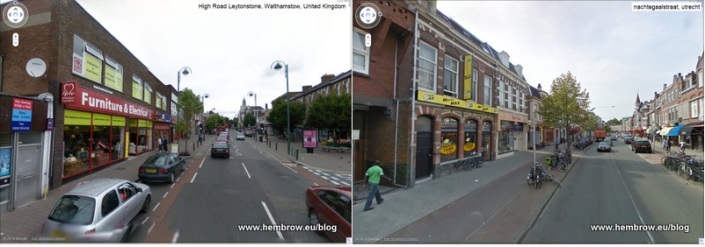
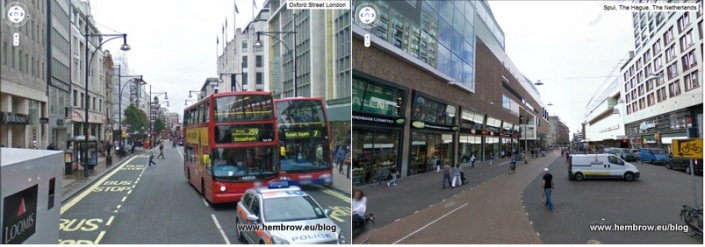
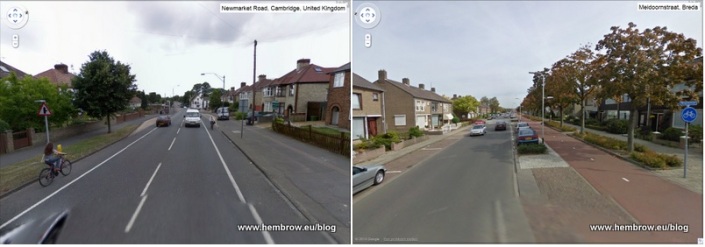
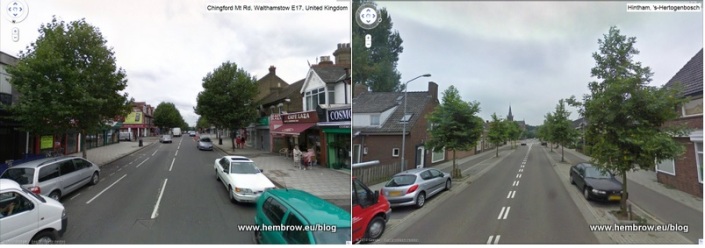
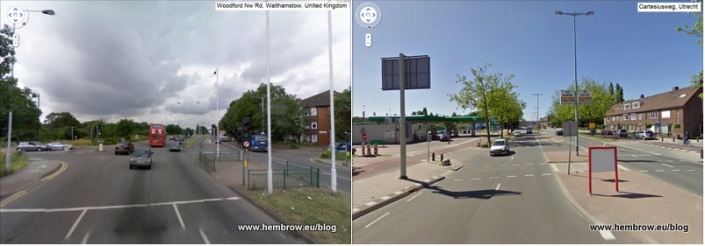
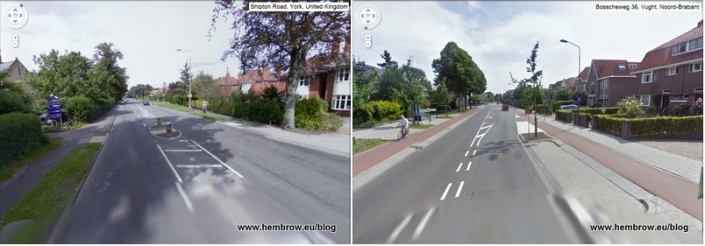
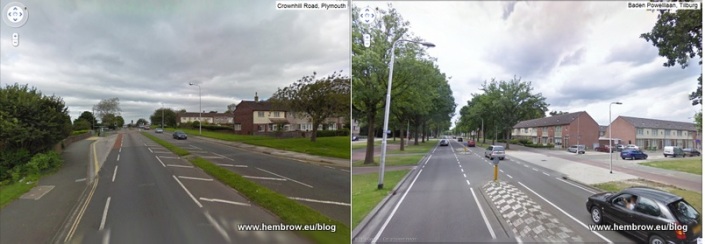
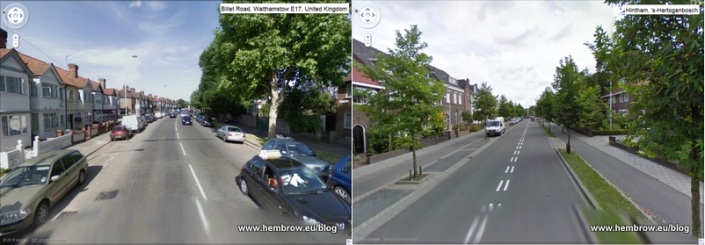
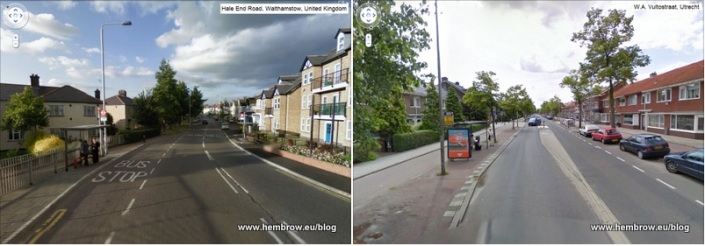

In each case, the cycling provision in the UK is rubbish or non-existent, while that provided on a similar street in The Netherlands offers a far superior cycling experience. Of course, if cycle lanes were better then more people would cycle, and if more people were riding bikes then there would be fewer cars on the road and so less congestion and less pollution. Everyone benefits, right?
The following video explains how the Dutch got their cycle paths, and how their cities made the transition from being car-centric to being more bicycle friendly.
What the Dutch have achieved is truly remarkable, and this is why I always hold them up as the best example for the UK to follow. They are the only country in the world able to boast the fact that more than a quarter of all their journeys are made by bike, and it would be my dream come true if we could achieve this feat in the UK.
Related articles
- Making cycle lanes safe (cyclingnelly.wordpress.com)
- Crosspost: Cyclists and pedestrians as ‘hazards’ for motorists. #wordlturnedupsidedown #takecaregtrmcr (manchesterclimatemonthly.net)
- No, it’s not the narrowest cycle path in Britain! (cyclingnelly.wordpress.com)
- Only 10 fines for illegal cycle lane parking (belfasttelegraph.co.uk)
Dinosaur MPs on Britain’s Transport Committee
Link Posted on Updated on
Dinosaur MPs on Britain’s Transport Committee
For the many of you fortunate enough to not view the committee’s near two-hour session about cycle safety on Monday afternoon, I can tell you that there are scarcely enough words to describe how disheartening and shambolic it was. To give you a flavour of one journalist’s reaction, follow this link to see a collation of running tweets from the event.
The session followed the recent deaths of six cyclists in London and saw the 11-member committee first quiz a series of cycling representatives and police, then a trio of bigwigs from the road haulage world, along with Andrew Gilligan, cycle adviser to London’s mayor, Boris Johnson, and an expert from the Transport Research Laboratory.
For the most-part, it seemed as if the MPs were concerned with minor issues. For instance, Sarah Champion (Labour MP) wondered whether helmet use could be made compulsory. How a bike helmet is supposed to help someone crushed by an HGV is something that we might wonder in response… The headphones issue was also raised.
Following this, Jason McCartney (Tory MP) asked if there was a war going on between cars and bikes. His party colleague, Martin Vickers, then asked – and he was being entirely serious – if the panel felt cyclists should “contribute” financially to the upkeep of roads. Yes, that’s right. The road tax question, the litmus test for someone who not only doesn’t understand the very basics about cycling policy but hasn’t the barest minimum of intellectual curiosity about it. Silly enough in a pub conversation. For an MP, let alone an MP on the transport select committee, let alone an MP on the transport select committee discussing cycling, it’s unforgivable.
An extract from a Guardian article on the subject encapsulates some real truths about how cycling issues are addressed by the people in power:
“…when it comes to cycling policy in Britain, we remain, for the most part, in the age of the dinosaur. The odd politician talks an occasional good game on bikes, but look at too many mainstream MPs and we’re right back in the 1960s, where bikes are a toy, or a faddish “pursuit”, perilous and mistrusted, while all must lie down in homage to “the economy”, a narrowly-defined set of interests with motorised pistons beating at their heart.”
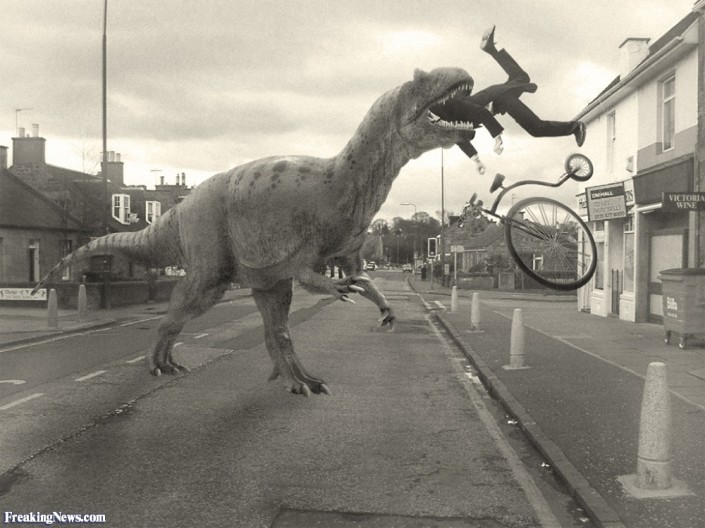
Jim Dobbin (Labour MP) then proceeded to regale the committee with a series of anecdotes about misbehaving cyclists and scratched car paintwork before suggesting that currently cycle safety woes could be addressed by requiring cyclists to register themselves and their bikes, and to pass proficiency tests in order to gain a cycling licence.
Although many people may believe that Dobbin’s prescription is a good one, it is worth remembering that not a single country on this planet implements these things for the simple reason that they massively curtail bicycle use. Bicycles don’t have the capacity to be the killing machines that cars and lorries sometimes are, and cyclists don’t produce CO2 or damage the roads to the same degree as motor vehicles; requiring them to be registered and licensed (presumable at some cost) seems a preposterous and misguided contribution to a meeting about cycle safety. And while cycling proficiency is a reasonable issue, no one at the committee meeting seemed aware of the bikeability scheme.
Part two was possibly even more depressing still. The MPs, who had been quite interrogative towards the cycle groups (albeit mainly on irrelevancies) gave the haulage group representatives a far easier time. Jack Semple, policy head of the Road Haulage Association, was left utterly unchallenged when he repeatedly singled out cyclist behaviour as the reason for them being killed by lorries; an assertion for which there is, as far as I understand, no evidence.
What was missing from the committee meeting was an acknowledgement of the fact that cities are changing places. Whereas once they competed on things like skyscrapers and parking spaces, the most desirable cities in the world are now places where there is an emphasis on liveability – a more human-centred approach. People don’t want to live with urban motorways and the noise, congestion, and pollution that they bring with them. The nicest cities are more pedestrianised, with pavement cafes, and safe, communal spaces. They also prioritise (and even incentivise) walking and cycling in such a way as to make them more convenient than driving (just look at Groningen in The Netherlands for the perfect example).
To illustrate this point, it is worth noting that there are three big annual lists of the world’s most liveable cities. Not one of them features anywhere in the UK.
Things clearly need to change, and the mass extinction of political dinosaurs seems to be a necessary first step.
London Cyclists stage mass ‘die-in’
Following the recent deaths on London’s busy streets, cyclists in the capital held a vigil and protest outside the headquarters of TfL (Transport for London). Despite the cold we lay down next to our bikes and made a pretty bold statement that TfL can no longer ignore.

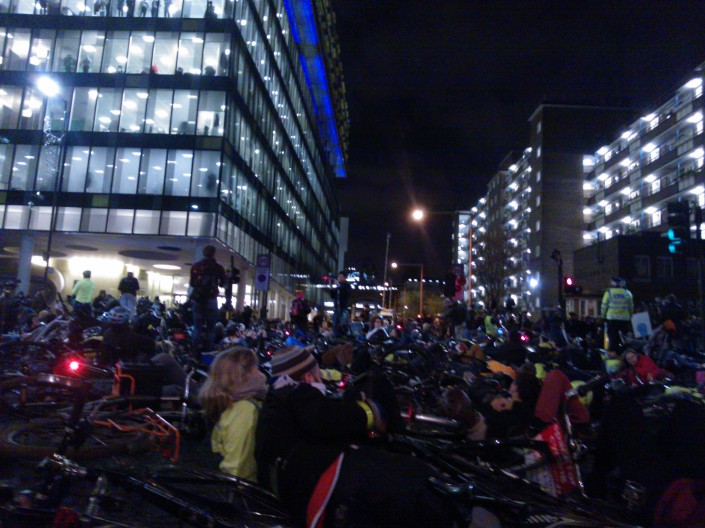
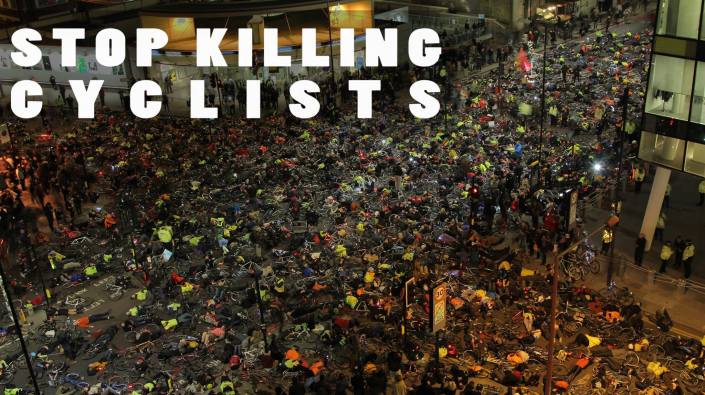
London’s die-in was reminiscent of the famous Dutch die-in that took place in the 1970s on the museumplein outside the Rijksmuseum.

The Dutch campaign was motivated by the number of people (particularly children) who were dying on the roads. Their protest achieved remarkable things in terms of their infrastructure, and 40 years down the line they are still reaping the benefits.
Dutch solutions to London’s problems aren’t really so radical, and their implementation would only requires a modest degree of commitment from the government.
Look at how they deal with HGVs and roundabouts – surely this sort of infrastructure is desirable for everyone, no?
On a side note, my sister was interviewed by the BBC during the protest, and her vox-pop even made it onto the evening news! I will try to upload a video, if I can find one…

And the BBCs coverage of the event (my sister at 1:04)…
and another one…
Related articles
- Cyclists lie outside Transport for London (TfL) headquarters to protest road deaths (express.co.uk)
- Thousands of cyclists lie down in the road for rush hour protest outside TfL’s Blackfriars HQ (standard.co.uk)
- http://www.huffingtonpost.co.uk/2013/11/29/stop-killing-cyclists_n_4361265.html?utm_hp_ref=uk
- http://www.bbc.co.uk/news/uk-england-london-25160874
- http://www.cyclingweekly.co.uk/news/latest/541453/cyclists-stage-mass-die-in-outside-transport-for-london-offices.html


